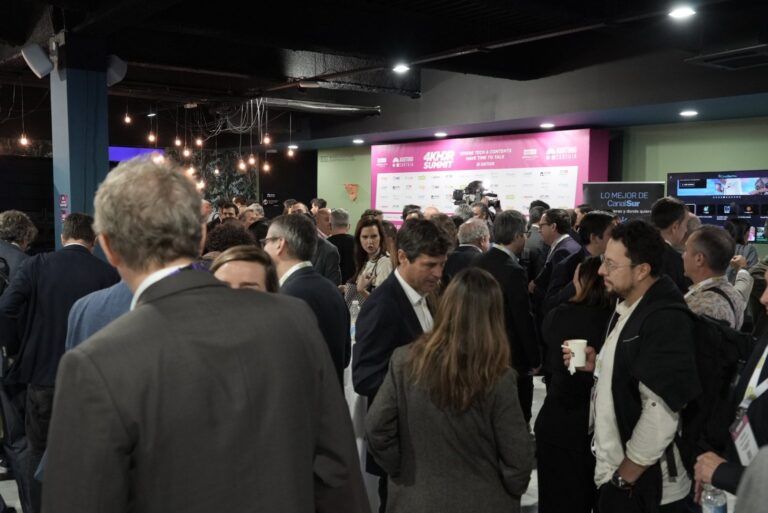
AI and cloud computing applied to UHD redefine television and audiovisual content at the 4K HDR Summit
- The second day of the 4K HDR Summit brought together experts from leading companies such as Google, Ateme, Elecard, Aicox, Small Pixels, Lawo and Eutelsat, among others, as well as RTVE, the UWA and Telefónica Servicios Audiovisuales.
- They analysed how Ultra High Definition and AI are transforming content production, distribution and experience, from sports OTT platforms to traditional television channels, including advanced encoding solutions, satellite fleets and e-commerce in UHD.
- UHD Spain, Ultra HD Forum and FAVN participated in a panel in which they announced that they will work together to create a European association to promote UHD technology in Europe.
- This Thursday, 13 November, the third day (the first virtual one) will be held, focusing on sustainability, immersive audio, new production and broadcasting experiences, and more artificial intelligence. National companies such as Hispasat and Cellnex will participate in this day, as well as international companies such as Synamedia and Canon, associations such as the EBU and the Ultra HD Forum, and broadcasters such as NHK, Globo and Olympic Broadcasting Services.
The second in-person day of the 4K HDR Summit, held from 11 to 14 November at the Cartuja Auditorium – managed by Yventu – at Sevilla TechPark, brought together experts from the audiovisual sector to analyse how Ultra High Definition (UHD) and artificial intelligence (AI) are transforming content production, distribution and experience. From sports OTT platforms to traditional television networks, advanced encoding solutions, satellite fleets and UHD e-commerce, speakers agreed that AI has become a key element in optimising workflows, improving image and sound quality, personalising the viewer experience and opening up new monetisation opportunities in an increasingly fragmented and competitive global market.
As part of the agenda, Google Cloud participated in several key sessions addressing the challenges and opportunities that artificial intelligence (AI) and cloud computing pose for the global distribution of high-quality videos and live sporting events. José Ramón Vázquez, Telco & Media Specialist at Google Cloud, led the roundtable discussion “Reinventing High-Quality Video Distribution,” a debate focused on how artificial intelligence and cloud technologies are transforming the production, distribution, and viewing experience of digital video. Together with Remi Beaudouin, Chief Strategy Officer at Ateme, and Javier Lucendo, Senior Manager of Video Processing and Delivery at Telefónica, the session explored how artificial intelligence is optimising processing, compression and distribution workflows, while enabling new high-quality formats with lower bandwidth and greater energy efficiency.

For Remi Beaudouin, “AI can optimise video compression and packaging to reduce bit rates and costs” and he highlighted that it “allows dynamic adjustments to be made to maintain quality efficiently”. “New standards and AI-based processing will transform content distribution,” he concluded. For his part, Javier Lucendo stated that “metadata is fundamental to personalisation, and AI helps to recommend content based on user behaviour and preferences.”
Jatin Dev, Senior Partnership Lead and Global Sellside at Google, will address the challenges of monetising live, free-to-air sports broadcasting, as well as innovations that enable a secure, high-quality viewing experience for major sporting events. “The sports industry has become a high-performance global business where value is no longer passively obtained, but actively created and strategically captured,” concluded Jatin, who participated in the panel “Live Sports Event Distribution,” moderated by María Medina, Managing Director of Medina Media Events, which discussed how to meet fan expectations and maximise value. He was joined by Remi Beaudouin, Chief Strategy Officer at Ateme; James Pearce, Senior Vice President of Broadcast & Streaming at DAZN; and Alex Sánchez, COO at Eurovision Services.
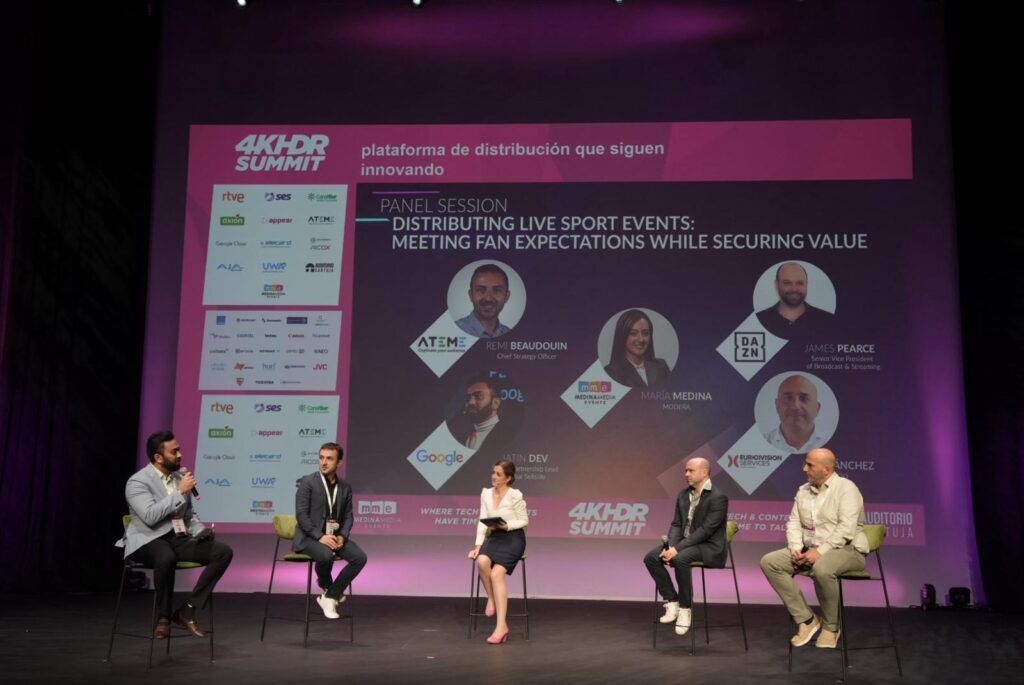
The discussion focused on the changing landscape of sports consumption and the need for innovation to respond to changes in fan behaviour. Jatin Dev highlighted how “platforms such as Netflix have attracted new audiences, especially younger and more diverse audiences, through engaging content such as Formula One’s ‘Drive to Survive’.” Remi Beaudouin emphasised the “need for sports providers to adapt to fragmented audiences by using a variety of formats and technologies.” James Pearce addressed the challenges of piracy and the “importance of protecting media rights through advanced technologies such as DRM and watermarking.” Meanwhile, Alex Sánchez analysed the balance between production quality and cost, noting “a trend towards HDR, taking into account the economic implications of streaming.”
AI improves content quality
For their part, Aicox and its partner Small Pixels presented some solutions for the sector. Marta Pérez Montserrat, Broadcast & Media Project Engineer at Aicox Soluciones, shared the stage with her colleague Fabio Clabot, CEO of Small Pixels, who presented the work of this Florence-based company in “developing artificial intelligence (AI)-based software solutions to improve video quality and real-time processing.” Small Pixels’ mission is to “improve the way video is processed, analysed and distributed, helping the industry move from traditional broadcasting to intelligent, data-driven workflows”. Among its many solutions, they presented video pre-processing to “analyse and correct colour, sharpness and motion in each frame before encoding” and their “AI-based upscaling technology, which instantly converts HD content to 4K or 8K for smoother motion, especially in sports broadcasts”.
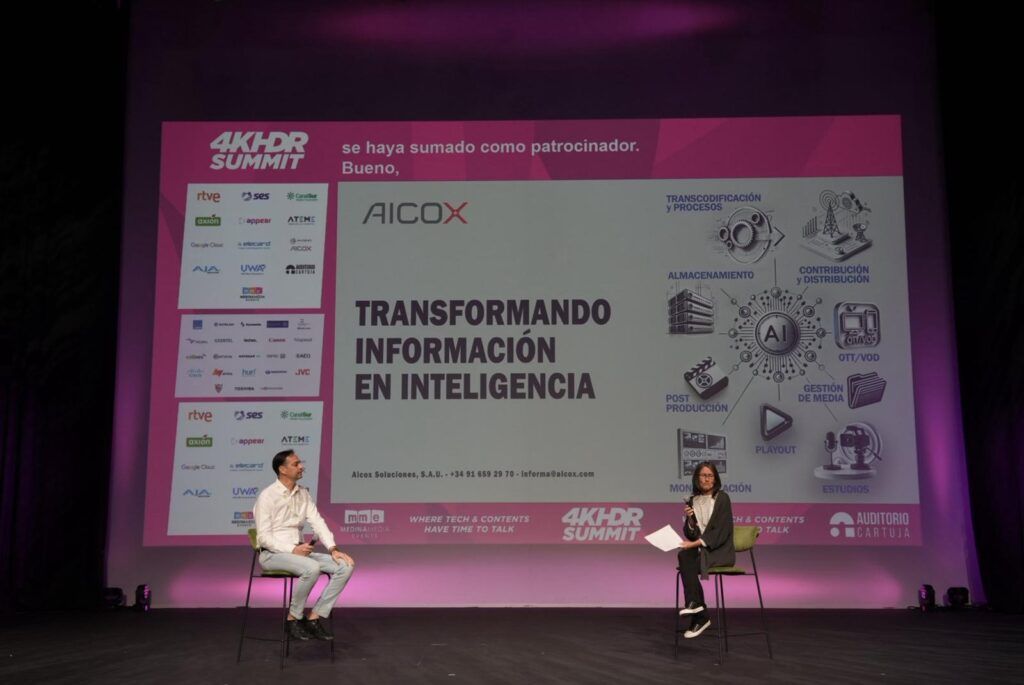
Álvaro Ramírez Pérez, Director of Communications at Sevilla FC, presented the Sevilla FC+ platform, which began as an OTT project but has since evolved into something more. The aim is to “build fan loyalty, achieve greater internationalisation and monetise around a new ecosystem”. It is a “sustainable project” that has managed to “optimise the club’s resources and bring all platforms together”, and work is underway to “offer 4K content and improve the quality of historic matches with the help of AI”.
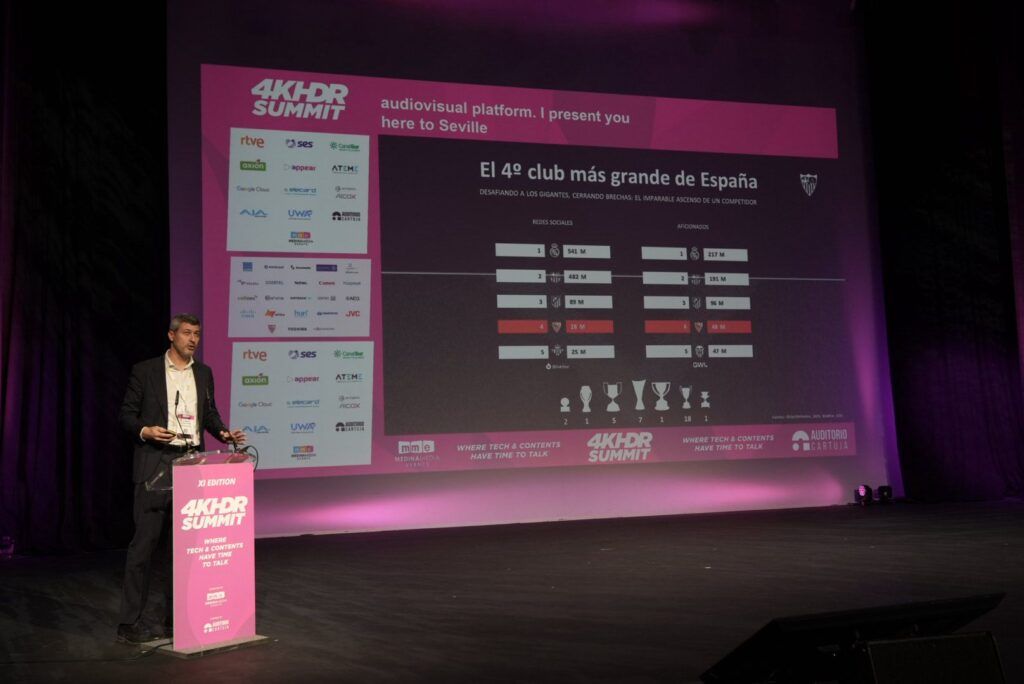
Anastasia Shkabara, Business Development Director, EMEA at Elecard, highlighted her company’s extensive experience in encoding, transporting and monitoring live and on-demand broadcasts, ranging from SD to 8K resolutions and incorporating advanced standards such as HDR and HLG. “Our goal is to help organisations ensure that their audiences enjoy smooth, reliable and high-quality streaming experiences,” said Anastasia Shkabara.
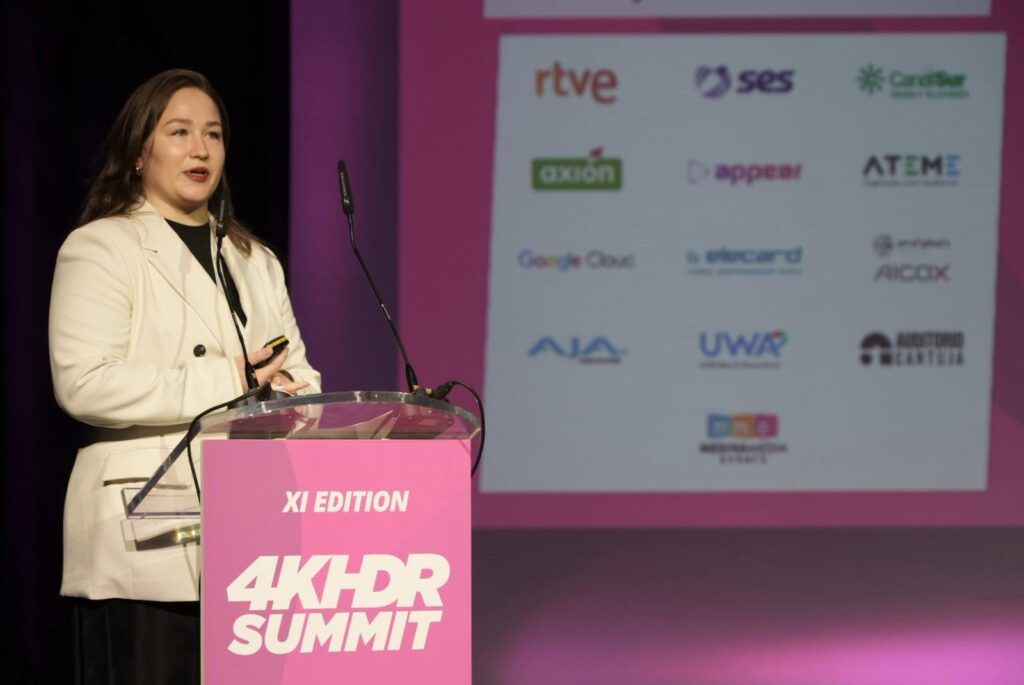
Axel Bach, Presales and Delivery Engineer – Media Infrastructure Solutions at Lawo, spoke about innovation in audiovisual production: flexibility and microservices in the IP world. In his presentation, he emphasised the “importance of orchestration and control of applications on servers, as well as resource optimisation for UHD”.
Cristiano Benzi, SVP Video Products at Eutelsat, discussed the evolution of 4K channels in the company’s satellite fleet, which currently has 21 channels, ten of them from the EHB13E position, the most important one. Benzi lamented the loss of channels over the last five years, from 38 in 2020 to the current 21, something that is not happening, for example, in China, where satellite broadcasting is booming. In this regard, he stressed the “importance of the entire chain working together to make 4K a success.”
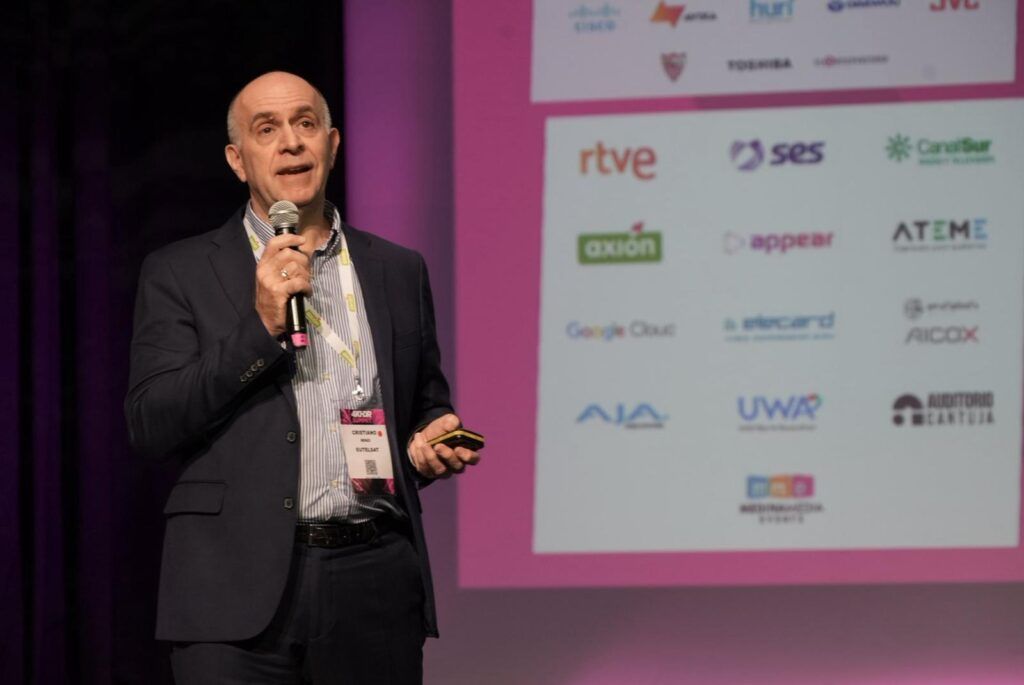
Rémi Tereszkiewicz, CMO Europe at the Ultra HD World Association (UWA), offered a comprehensive overview of the next generation of video and immersive media standards, focusing on multi-platform transmission, intelligent production and advanced content distribution. “The UWA is already working with global leaders to define new standards that maintain creative consistency and visual quality across all devices, from mobile phones to 8K and 16K screens,” he said.
UHD Spain, Ultra HD Forum and FAVN to create a European UHD association
Víctor Sánchez, Director of Media and Operations at TVE and President of UHD Spain; Jacques Donat-Bouillud, Director of France Télévisions and President of the Forum Audiovisuel Numérique (FAVN); and Tonio Di Stefano, President of Ultra HD Forum Italia, led a panel discussion on the present and future of UHD in Europe, in which they agreed on the “need to be united and jointly promote the implementation and advancement of Ultra High Definition on the continent.” In this regard, they announced that the three associations will work together to create a European association to promote UHD technology in Europe.

Víctor Sánchez, Director of Media and Operations at TVE, presented Radio Televisión Española’s progress in adopting UHD (Ultra High Definition), HDR (High Dynamic Range) and Artificial Intelligence technologies, highlighting its role as a leader and driver of innovation in Spanish and global broadcasting. “These technologies mark a new era in the audiovisual experience, improving image quality, contrast, colours and immersive audio, while remaining accessible via DTT and digital platforms such as RTVE Play,” he emphasised.
Jacques Donat-Bouillud, Director of France Télévisions and President of the Forum Audiovisuel Numérique (FAVN), discussed the contribution to innovation from a distribution perspective and assured that in order to achieve UHD production and distribution, it will be necessary to “make linear television more premium with quality content, distribute linear content across all platforms, and produce UHD content to enhance the appeal of its catalogue.”
Tonio Di Stefano, President of Ultra HD Forum Italia, gave an in-depth historical overview of the evolution of television in Italy up to the present day, with special mention of Italian public television, Rai, which today has a total of 13+1 television channels and 12 radio stations. “Since we started producing in UHD in 2016, everything has changed a lot. We are moving towards a new form of consumption that is very changeable,” he said.
Jorge de la Nuez, Head of Technology & Operations at Olympic Channel Services, discussed the evolution of audiovisual production at the Olympic Games, highlighting the transition to high-definition formats such as UHD and HDR. “Since Tokyo 2020, the amount of archived content has doubled, reaching some 80,000 hours, as we have started archiving in HD and UHD,” said De la Nuez.

Ángel García Castillejo, Vice-President of the National Commission for Markets and Competition (CNMC), stressed that “technological convergence, the emergence of new distribution platforms, artificial intelligence, interoperability, sustainability and cybersecurity are creating a scenario of opportunities, but also an unprecedented challenge“.
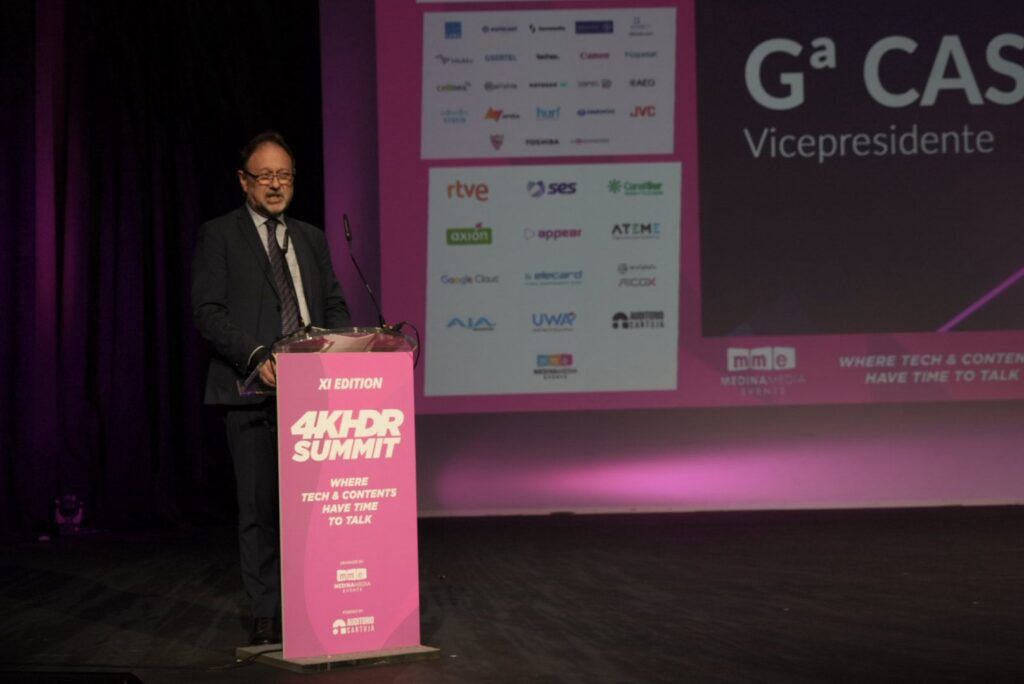
Paul Gray, a consultant at Omdia, analysed the current situation in the television market, noting that “it is currently stable, although there was growth during the pandemic with a peak of 250 million units per year.” As a reference, he pointed out that the average size of televisions in China continues to grow, reaching 65 inches. This trend is not similar in Europe and other parts of the world.
Exclusive demonstration and networking area
As in previous editions, visitors were able to enjoy an exclusive demonstration and networking area with more than 500 attendees during the two days of the event. During the two days of the event, visitors were able to watch live productions in Ultra High Definition, such as the Armed Forces parade on 12 October 2025 broadcast by RTVE, or the Euforia concert broadcast by 3Cat, courtesy of UHD Spain. Visitors were also able to view on-demand content in UHD thanks to the Canal Sur exhibition area and learn how content is managed and produced from a mobile unit thanks to Hurí. Ateme, Elecard, AJA, Aicox with Small Pixels, UWA, Lawo, Alfalite, Gsertel, Synamedia, Netgear, Sapec, Techex and AEQ will also be present in this exclusive demonstration area.

This Thursday, 13th November, marks the third day (the first virtual one), which will focus on sustainability, immersive audio, new production and broadcasting experiences, and more artificial intelligence. This day will feature national companies such as Hispasat and Cellnex; international companies such as Synamedia and Canon; associations such as the EBU and the Ultra HD Forum; and broadcasters such as NHK, Globo, and Olympic Broadcasting Services.
The 4K HDR Summit 2025 is organised by Medina Media Events and supported by RTVE, SES, RTVA, Axión, Appear, Ateme, Google Cloud, Elecard, Aicox con Small Pixels, AJA, UWA, Lawo, Eutelsat, Synamedia, Rohde & Schwarz, Canon, Hispasat, Cellnex, Alfalite, Netgear, MoMe, Datos Media con Telestream, Sapec, AEQ, Gsertel, Techex, Cisco, Avixa, Hurí, Sevilla FC, Vestel, Daewoo, JVC and Toshiba, among others.
All conferences will be available for viewing on demand through ‘The Observatory’, Medina Media Events’ digital platform, where each conference can be viewed throughout the year, 24 hours a day, free of charge.



